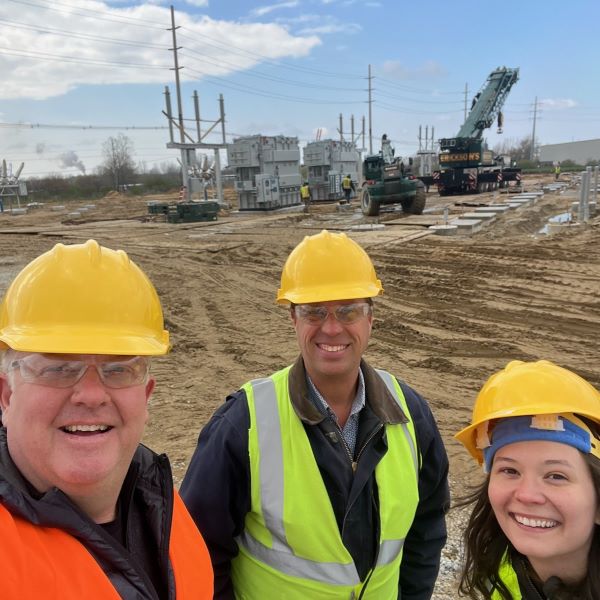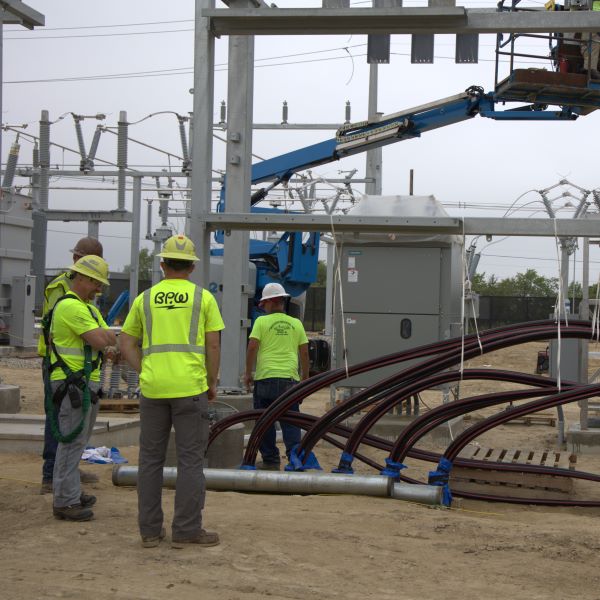Partner
Supporting Community Growth
Local Demand
Serving the community’s needs for electricity is a critical function of Holland BPW. It takes ongoing planning and analysis to make sure we have the right amount of electricity to meet customer demands. Periodically, Holland BPW conducts an Integrated Resource Plan (IRP) that looks decades into the future to project the community’s resource needs and uses the Community Energy Plan as a framework for parameters. The electric utility makes adjustments daily, responding in real time to changes in the energy market and customer needs, striving for the best reliability and prices possible for customers.
As the community’s needs change, local infrastructure also needs to change. Holland’s economy benefits from an abundance of industrial and manufacturing businesses in the area. Commercial and industrial customers account for 84% of Holland BPW’s annual electric demand. When local businesses grow or new companies make their home in Holland, Holland BPW must have a clear understanding of their impact on the electric utility system.

Holland BPW has a significant role in the community’s economic development. It must be able to serve all customers most reliably and efficiently as possible. When a customer begins making growth plans, Holland BPW works closely with them to understand what their needs will be. Holland BPW is a public power utility that is accountable to its customers. As the utility system grows with the community, Holland BPW considers the impact on all customers and puts in measures to mitigate risk.

New Substation
When Holland BPW built the Greenly substation on 120th Street in 2013, the electric distribution system expanded and became more resilient. Greenly allows the electric distribution system to branch out in the northeast area, while increasing reliability of circuits coming out of the James and Quincy Street substations.
Holland BPW built its 11th and largest substation, East Point Substation, to serve the growing needs of customers. Substations switch and change the voltage of electricity from high levels used for efficient distribution to lower levels needed to serve homes and businesses. Named for its location in the southeast corner of Holland BPW’s electric service territory, the substation will be able to serve 80MW of additional load. Holland BPW identified a need for additional infrastructure based on growth in that area.
East Point was built as a system resource that will primarily serve LG Energy Solution, though it will also enhance the overall resilience of the electric distribution system. If LG’s load develops as planned, the new plant could utilize the full capacity of the substation.
Why does this work?
Holland BPW’s electric distribution system is designed around a high voltage loop, that serves our substations with redundancy and flexibility built in, increasing the reliability of our electric system.
Electricity must travel from where it is produced to the point where it is used. As an electric current travels over distances, some energy dissipates as heat due to resistance of the conductor. HBPW can move large amounts of energy around our system with its 138 kV loop. Less current is needed at a higher voltage, which reduces the amount of energy lost by minimizing conductor resistance.

Much of our electricity is produced at Holland Energy Park and local peaking units. Holland BPW can bring electricity into Holland from resources HBPW owns outside of the local distribution system, or off the larger electric grid. Holland BPW’s distribution loop carries 138kV of electricity to local substations that step down the voltage to appropriate levels for customer use. All electricity that is supplied by Holland BPW passes through a substation before it reaches homes and businesses.
Having multiple substations also makes the system robust because it adds flexibility, creating options for the path of the electricity. Using switches, power on our high-voltage loop can be brought in from multiple directions instead of only one. That way if there is a problem, the electricity can use another path.

Supporting Michigan’s Automotive Industry
The automotive industry is a pillar of Michigan’s economy. Faced with many drivers of change, the state strives to maintain relevance in the automotive industry. Embracing the evolution of the electric vehicle (EV) market is a strategy to keep a foothold in automotive. For this reason, many Michigan municipalities are supporting the state’s pursuit of advanced manufacturing in the EV space. Holland has stepped up to the plate.
LG Energy Solution, manufacturer of EV batteries, made Holland its home in 2010 and has an expansion underway that will increase the company’s electric supply needs. As LG grows, it is likely that additional companies who are part of their supply chain will be attracted to the area. As Holland BPW supports this growth through infrastructure expansion, the utility is mindful of this demand and what it could mean for the rest of its customers.
Mitigating Customer Concentration Risk
Supporting a customer’s major expansion efforts is important, though there is risk involved. Holland BPW considers the level of customer concentration risk should something happen unexpectedly after large investments are made. When a small percentage of customers have a substantial effect on the utility system, the customer concentration risk is high. Holland BPW mitigates customer concentration risk with careful infrastructure planning and tariffs that ease financial impact.
Tariffs make sure that rates paid by a particular class of customer match the cost of service incurred by Holland BPW. These measures help minimize the financial risk for the rest of Holland BPW’s customers.


Holland’s Growing Economy
Holland BPW provides reliable and affordable utility solutions that help the community to flourish. With high quality services and infrastructure, Holland BPW facilitates opportunities for economic growth. Operating with fiscal responsibility and a skilled workforce gives Holland BPW the ability to respond to the community’s growth and changing needs.
Next Article: What Makes a Great Career? 〉
